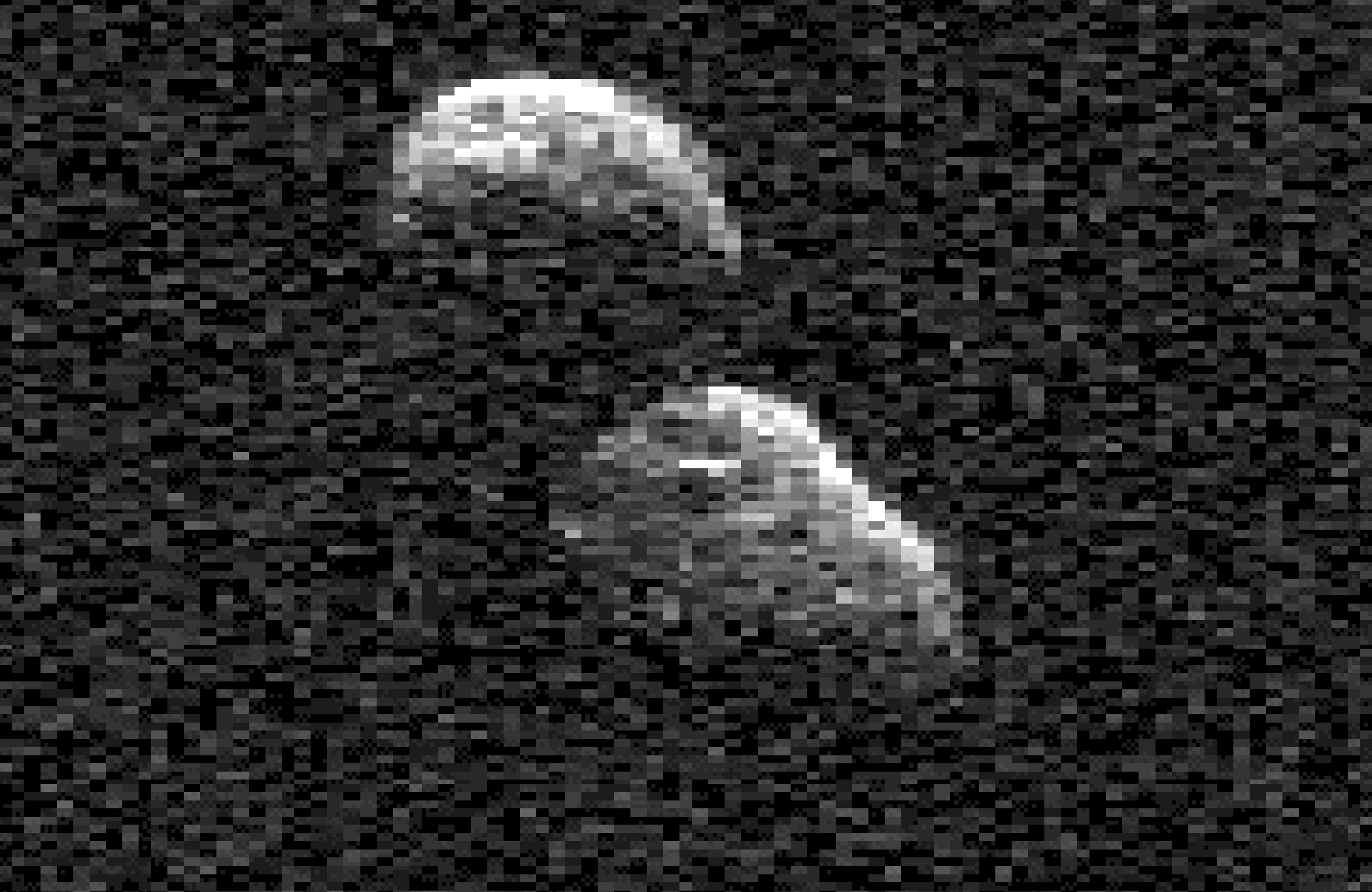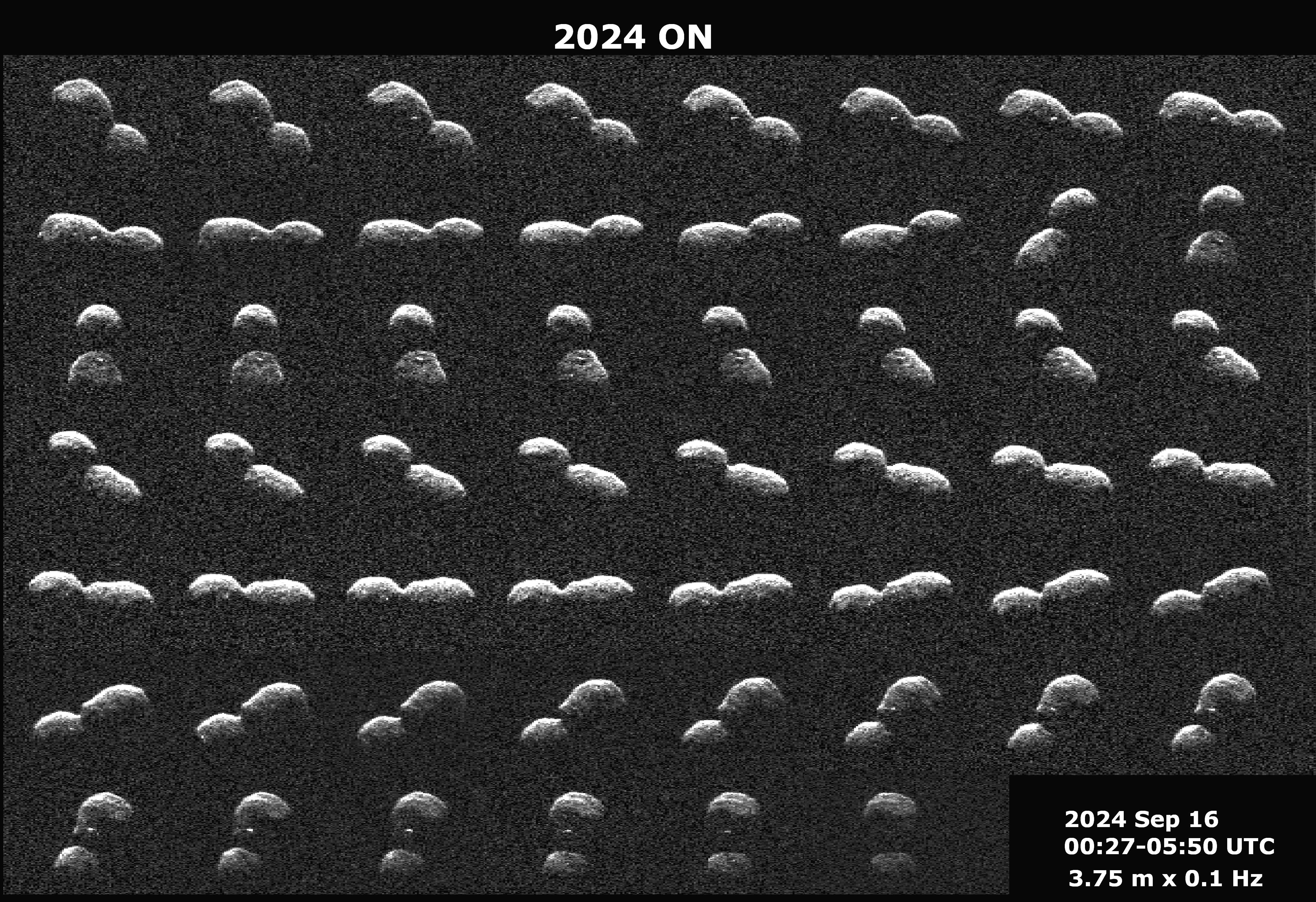Strange snowman-shaped asteroid spotted zooming past Earth
It did not pose any threat during its recent tumble past Earth
A series of radar images taken by Nasa has revealed that a large asteroid which zoomed past Earth last week was actually two space rocks melded into one object appearing like a snowman or a peanut.
The stadium-sized rock, dubbed 2024 ON, tumbled safely past Earth at about one million km (620,000 miles) away, or about 2.6 times the distance between the Moon and Earth.
Spotted only in July by the Asteroid Terrestrial-impact Last Alert System (ATLAS) on Mauna Loa in Hawaii, its massive size – about 300m across – makes it 99 per cent larger than any other near-Earth object.
Researchers now say the peanut-shaped space rock is likely a type of asteroid called a “contact binary” with two rounded lobes separated by a “pronounced neck” in which one lobe is about 50 per cent larger than the other.
It was likely formed as two space rocks came so close to each other eons ago that they became bound together by their gravitational pull.

Scientists say at least 14 per cent of near-Earth asteroids larger than about 200m (660 ft) have a similar contact binary shape.
New images suggest it is about 350m (1150 ft) long with features on its surface like large boulders that seem larger than 12ft across.
The asteroid seemed to rotate by about 90 per cent over about six hours, according to recent observations.

While it was classified as “potentially hazardous”, it did not pose any threat during its recent tumble past Earth on 17 September.
Nasa uses the term “potentially hazardous” for any asteroid that comes within 7.5 million km (4.6 million miles) of Earth’s orbit around the Sun.
New measurements based on recent radar images have helped researchers reduce any uncertainties in the asteroid’s distance from Earth and its future motion for many decades.

Researchers say it also does not pose any hazard to the planet for the foreseeable future.
So far, about 25,000 large asteroids have been discovered with the potential to at least wipe out a complete city.
But recent estimations of the paths of all known asteroids suggest none of them pose any threat to the planet for another 100 years.
However, there have also been a handful of close encounters of asteroids discovered just days and weeks before their predicted pass by.
There have also been cases of asteroids detected zooming toward the Earth only hours before they entered the planet’s atmosphere.
Governments are working to spot such potentially hazardous objects and develop ways to protect the Earth from them.
One such system is ESA’s Neomir observatory developed for launch around 2030 to circle between the Sun and the Earth and act as an early warning system for asteroids.
Join our commenting forum
Join thought-provoking conversations, follow other Independent readers and see their replies
Comments
Bookmark popover
Removed from bookmarks